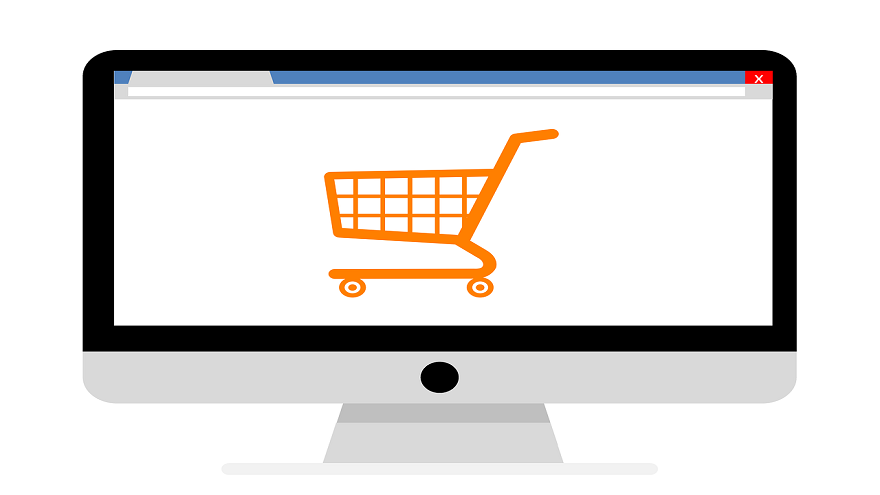Are you looking to make money online by selling goods? The internet has opened up endless opportunities for individuals and small businesses to reach a global audience and turn a profit. In this article, we will walk you through the steps to successfully sell goods online and get your e-commerce business off the ground.
Step 1: Choose Your Products and Niche
Before you can start selling anything online, you need to decide what you want to sell. This may seem like an obvious step, but it’s important to take the time to research and narrow down your options. Consider what products you are passionate about or have expertise in, as well as what is in demand in the market.
It’s also important to identify your target audience and niche. Who are you selling to, and what sets your products apart from the competition? By identifying these factors, you can tailor your marketing and sales strategies to effectively reach and convert your target customers.
Step 2: Set Up Your Online Store
Once you have identified your products and target audience, it’s time to set up your online store. There are several options for creating an e-commerce website, including using a platform like Shopify or WooCommerce, or building a custom site from scratch.
When setting up your online store, make sure to consider the following:
- Your website’s design and user experience: Your website should be visually appealing and easy to navigate. Consider using high-quality product photos and clear, concise product descriptions to make it easy for customers to find what they are looking for.
- Payment and shipping options: Decide how you want to process payments and ship your products. Some options include using a payment gateway like PayPal or Stripe, or offering local pickup or delivery options.
- Customer service and support: Make sure to have a plan in place for handling customer inquiries, complaints, and returns. This could include setting up a customer service email or phone line, or offering live chat support on your website.
Step 3: Market and Promote Your Products
Now that you have your online store set up and ready to go, it’s time to start marketing and promoting your products. There are many ways to do this, including:
- SEO: Optimizing your website and product pages for search engines can help increase visibility and drive traffic to your site. This includes using relevant keywords in your website and product descriptions, as well as building high-quality backlinks to your site.
- Social media: Utilizing social media platforms like Facebook, Instagram, and Pinterest can help you reach a large audience and drive sales. Consider creating a social media marketing strategy and posting regular updates about your products and promotions.
- Email marketing: Building an email list and sending newsletters or promotional emails can help you stay top of mind with customers and drive sales. Consider offering a discount or special offer to encourage people to sign up for your email list.
- Paid advertising: Investing in paid advertising, such as Google Ads or Facebook Ads, can help you reach a targeted audience and drive sales. Make sure to track the effectiveness of your ads and adjust your strategy as needed.
Step 4: Track and Analyze Your Results
To effectively run an e-commerce business, it’s important to track and analyze your sales and marketing efforts. This will help you understand what is working and what may need to be adjusted.
Some key metrics to track include:
- Sales: Keep track of your total sales, as well as the number of orders and average order value. This will help you understand your overall performance and identify trends over time.
- Traffic: Monitor the number of visitors to your website and where they are coming from. This will help you understand what marketing channels are most effective at driving traffic and sales.
- Conversion rate: Track the percentage of visitors to your website who make a purchase. A high conversion rate is a sign that your website and marketing efforts are effectively converting visitors into customers.
By regularly tracking and analyzing these metrics, you can identify areas for improvement and make adjustments to your marketing and sales strategies.

Step 5: Expand and Grow Your Business
Once you have established a successful e-commerce business, you may want to consider expanding and growing your offerings. This could include adding new products or services, entering new markets, or diversifying your sales channels.
As you grow, it’s important to continue tracking and analyzing your performance and making adjustments as needed. You may also want to consider seeking the guidance of a business coach or mentor to help you navigate the challenges of growing your business.
Conclusion
Selling goods online can be a lucrative and fulfilling way to make money. By following the steps outlined in this article, you can successfully set up and run an e-commerce business and reach a global audience.
If you’re looking to get started with your own online business but need more guidance and support, consider joining our free WiFi Entrepreneur training center and community. We offer the knowledge, tools, and access you need to quickly succeed online.


